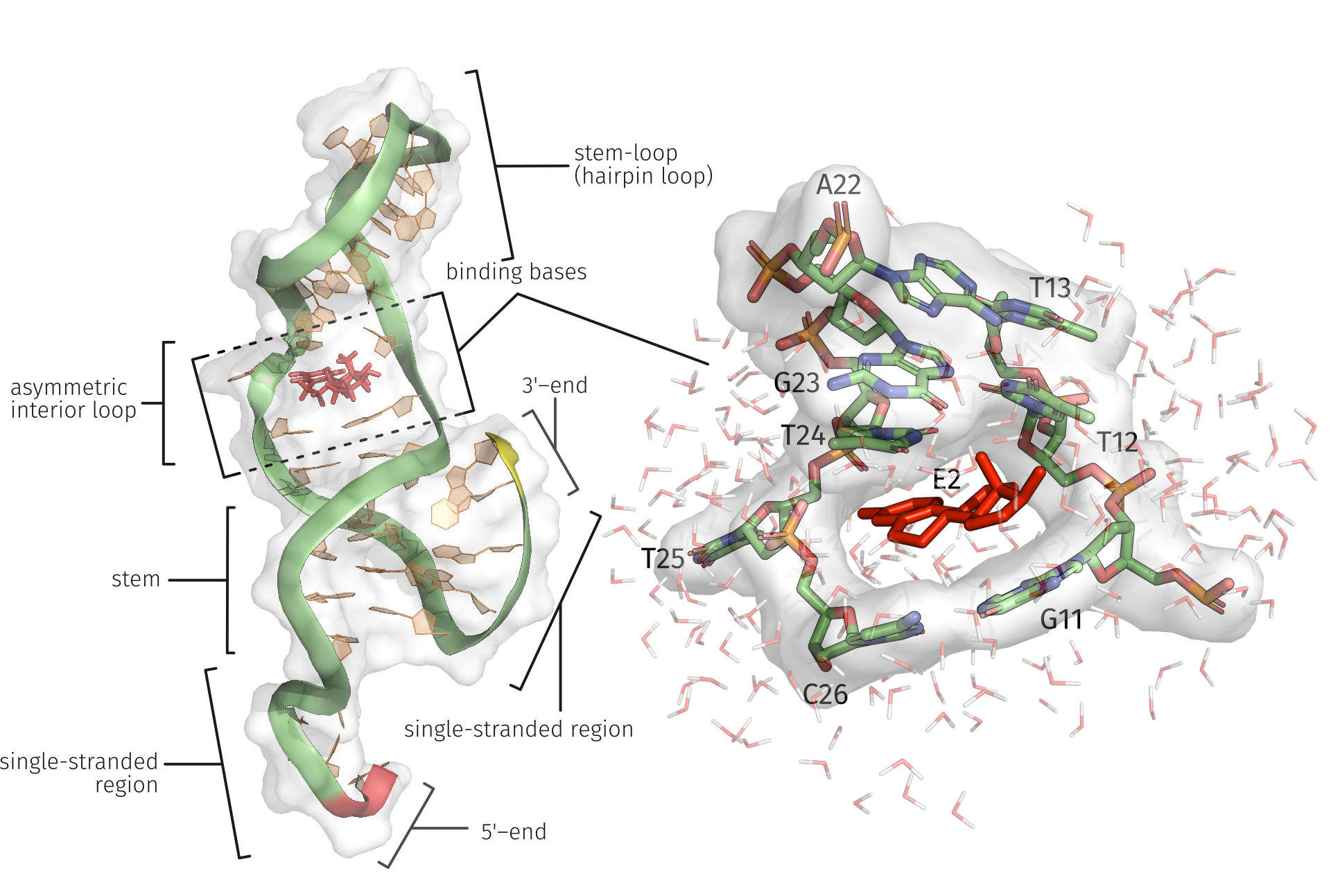Micro-pollutants such as 17β-Estradiol (E2) have been detected in different water resources and their negative effects on the environment and organisms have been observed. Aptamers are established as a possible detection tool, but the underlying ligand binding is largely unexplored. In this study, a previously described 35-mer E2-specific aptamer was used to analyse the binding characteristics between E2 and the aptamer with a MD simulation in an aqueous medium. Because there is no 3D structure information available for this aptamer, it was modeled using coarse-grained modeling method. The E2 ligand was positioned inside a potential binding area of the predicted aptamer structure, the complex was used for an 25 ns MD simulation, and the interactions were examined for each time step. We identified E2-specific bases within the interior loop of the aptamer and also demonstrated the influence of frequently underestimated water-mediated hydrogen bonds. The study contributes to the understanding of the behavior of ligands binding with aptamer structure in an aqueous solution. The developed workflow allows generating and examining further appealing ligand-aptamer complexes.

